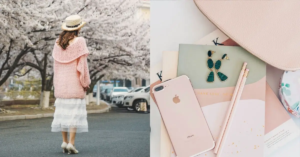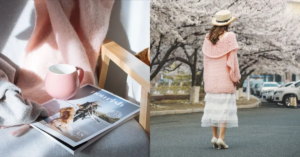Prepare to immerse yourself in the realm of “flex culture” – a current movement that is as captivating as it is debatable. It’s likely that you’ve encountered it on your social media platforms, where folks are pulling out all stops to flaunt their newest accomplishments and belongings. However, the question arises – is this just harmless entertainment or is there a hidden, sinister aspect to this apparently benign cultural trend?
As you continue reading, you’ll learn about the origins of flex culture and how it’s quickly becoming an integral part of our day-to-day conversations. But beware: the darker aspects of flex culture might leave you questioning some of your habits and the intentions behind this flashy new trend. Curiosity piqued? Let’s uncover the secrets of flex culture together!
What is Flex Culture?
Branded Clothing and Luxury Brands
In flex culture, branded clothing and luxury brands play a significant role. It’s common to see people flaunting Gucci, Chanel, Supreme, and more. These high-end brands serve as status symbols, setting them apart from the average person and reinforcing the idea that material possessions equate to success.
The Allure of Mansions and Luxurious Holidays
Moreover, flex culture extends beyond clothing and accessories to encompass lavish lifestyles. Mansions and luxurious holidays act as an outward expression of wealth and status, intended to create envy and adoration. Like high-end clothing, these extravagant displays of affluence are meant to validate the individuals’ position in society and create an elevated sense of self-worth.
By understanding the role material possessions and extravagance play in flex culture, you can be more conscious of the influences around you and make informed choices about what truly brings fulfillment and happiness in your life.
Popularity of Flex Culture
Social Media’s Role
Social media platforms like Instagram, Facebook, and TikTok play a massive role in promoting flex culture. They allow users to showcase their material possessions, luxurious lifestyles, and even their wealth. This display of opulence creates a desire for validation and admiration, encouraging others to follow suit and indulge in similar behavior. However, the dark side of this trend is that it fuels the feeling of inadequacy in those who aren’t as affluent, leading to jealousy and unhealthy comparisons.
Influence of Hollywood
Hollywood significantly influences popular culture, and flex culture is no exception. Movies and TV shows often glamorize materialistic and extravagant lifestyles, inspiring viewers to seek the same experiences. Celebrities and their larger-than-life personas also contribute to this trend, as they enjoy attention and constantly appear in the media. The downside to this influence is that it can result in unrealistic expectations and financial strain, as people try to emulate their favorite stars.
Celebrity Culture and Flexing

Lastly, celebrities play a vital role in the propagation of flex culture. Many stars flaunt their wealth through social media platforms, sharing photos of their luxurious vacations, designer fashion, and exclusive events. Their fans not only admire them but also want to live similar lives. Thus, celebrities set the bar high for the aspirational lifestyle that people wish to achieve. The dark side is that this display of wealth can create an unrealistic perception of what constitutes success and happiness, leading to a never-ending pursuit that may never bring true fulfillment.
Flex Culture in Digital Media
YouTube and Vloggers
With YouTube being a primary platform for content creators, many vloggers have embraced flex culture. By showing off expensive cars, flashy jewelry, and luxurious homes, they attract viewers and gain a larger following. However, this can also create unrealistic expectations and foster a sense of inadequacy among their audience members.
One famous YouTuber might feature a tour of their multi-million dollar mansion, while another proudly flaunts their latest designer fashion haul. Though it’s fascinating to see a glimpse of a lavish lifestyle, it can also promote materialism and a relentless pursuit of wealth, pushing some viewers to make reckless financial decisions in their quest to keep up.
Social Media Influencers
Similar to the YouTube scene, social media influencers are also deeply ingrained in flex culture. From Instagram to TikTok, influencer-driven content often spotlight expensive items, exotic vacations, and picture-perfect lifestyles.
These curated feeds can make you feel like you’re missing out, driving you to covet the over-the-top lifestyle they portray. The pressure to stay relevant and maintain a loyal following can also take a toll on the influencers themselves, as they continually strive to outdo themselves and each other, resulting in an endless cycle of excess and one-upmanship.
The Negative Impact on Society

Undermining Self-Esteem
It’s natural to compare yourself to others, but flex culture can make those comparisons feel even more brutal. It’s easy to feel inadequate when you’re bombarded with images of people sporting designer clothes, driving luxury cars, and vacationing in exotic locations. This constant comparison to others can undermine your self-esteem and create feelings of dissatisfaction with your own life.
Promotion of Debt and Harmful Intentions
The pressure to keep up with the “flexing” standard can push some people into financial distress as they accrue debt to fund their social image. Moreover, flex culture may encourage individuals to engage in malicious or harmful behavior to maintain their status. Cyberbullying, doxing, and theft are just a few examples of the negative consequences flex culture can bring to society as a whole.
Materialism and Happiness
Flex culture often promotes the idea that material possessions are the key to happiness. However, accumulating more stuff doesn’t always lead to lifelong satisfaction. Research has shown that experiences, relationships, and personal growth are more closely tied to happiness than material goods. By encouraging materialism, flex culture may actually undermine overall well-being and satisfaction within society.
Contributing Factors to Flex Culture
Marketing Strategies
One of the major players in the development of flex culture is the marketing strategies employed by brands and influencers. These marketing techniques tap into our desire to appear successful and wealthy. Clever advertising campaigns and celebrity endorsements often promote a luxurious and aspirational lifestyle, making it hard for you to resist the urge to buy into the latest trends and products.
Limited Edition and FOMO
The concept of limited edition products is another factor fueling flex culture. When a product is available in limited quantities or for a limited time, it creates a sense of scarcity and urgency. This feeds into our Fear of Missing Out (FOMO) and drives us to purchase, collect and show off limited edition items, only further intensifying the flex culture phenomenon.
Role of Designers and Writers
Designers and writers also play an essential part in the spread of flex culture. Creative individuals and teams are responsible for designing eye-catching products and crafting memorable ad campaigns that entice us to buy into the flex culture lifestyle. They develop striking visuals and intriguing narratives that resonate with our aspirations and desires, making flex-worthy products seem more valuable and appealing.
As you can see, flex culture is more than just showing off to your friends or followers; a combination of marketing strategies, limited edition products, FOMO, and the work of designers and writers drives it. While it’s natural to want to be a part of this exciting trend, it’s important to remember that it should never come at the expense of substance or personal well-being.
Conspicuous Consumption vs Self-Expression
Status and Conspicuous Consumption
Conspicuous consumption is all about the display of wealth and status to garner validation from the community. When you engage in this act, you’re trying to show off how rich you are by purchasing costly goods or participating in extravagant activities. This practice has deep roots in our culture and often is seen as a way to establish or maintain social standing among peers. For some, it’s the only way to feel superior and gain respect from others.
However, there’s a downside to chasing status through conspicuous consumption. When prioritizing the acquisition and display of costly items, it’s easy to lose sight of what truly matters, like real connections or personal development. Moreover, this behavior might lead to overspending and gradually detaching from reality, as the need for constant validation can become addictive.
Self-Expression through Expensive Possessions
On the other hand, purchasing expensive items can be a form of self-expression, allowing you to showcase your tastes, preferences, or unique identity. Owning high-quality products or indulging in luxurious experiences can provide a sense of pride and enjoyment, making your life richer and more fulfilling.
It’s essential to differentiate between self-expression and conspicuous consumption when engaging with your expensive possessions. Taking pride in your top-notch items doesn’t necessarily mean you’re flexing. Instead, consider reflecting on why you bought these objects and what they represent to you. If their significance goes beyond mere showiness and resonates with your personal values or passions, then it’s more likely that you’re expressing yourself rather than merely seeking validation.
Remember, balancing enjoying and showcasing your wealth is crucial while staying true to who you are. With the right attitude and deliberate choices, you can prevent your participation in flex culture from taking a turn toward the dark side of conspicuous consumption.
FAQ:
What is an example of flex culture?
An example of flex culture is the online behavior of celebrities, rappers, influencers, and vloggers who flaunt their wealth and status with pictures of themselves wearing designer clothes, driving expensive cars, and living lavish lifestyles on social media.
Why do people like flexing?
People like flexing because it can boost their social status, self-esteem, and reputation. It can also be a way to show off their wealth, success, and status symbols to gain attention and admiration from others.
What is flex in style?
Flex in style refers to wearing expensive, designer clothing and accessories to show off wealth and status. It is often associated with hip-hop culture and the practice of u0022flexingu0022 on social media by posting pictures of oneself wearing luxury brands and expensive jewelry.
What is Flex trend?
The Flex trend is a cultural phenomenon that involves flaunting one’s wealth, status, and luxury goods on social media. It is often associated with hip-hop culture and has become popular among younger generations who use it to show their success and gain social recognition.
Disclosure: We only recommend products we would use ourselves and all opinions expressed here are our own. This post may contain affiliate links that we may earn a small commission at no additional cost to you.
If you liked this blog article about the Flex Culture, don’t forget to follow us on Pinterest so you don’t miss any more fashion and beauty news.





